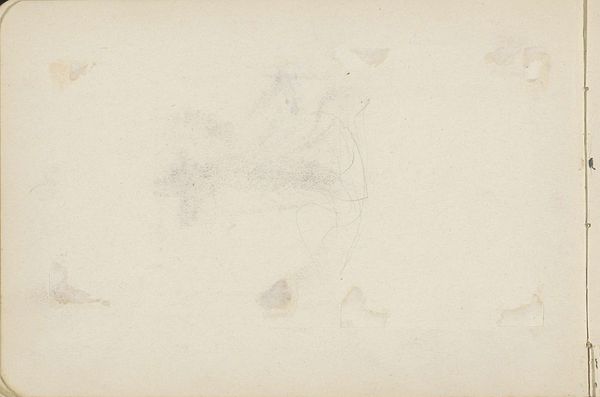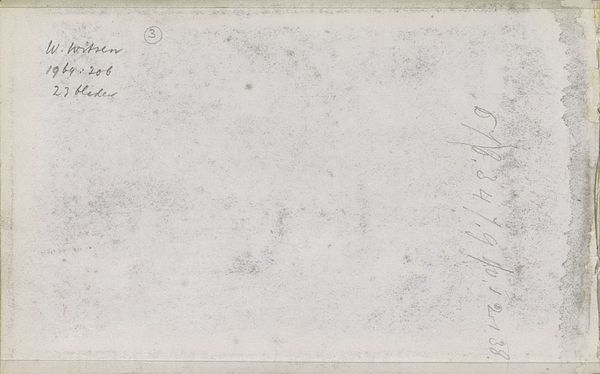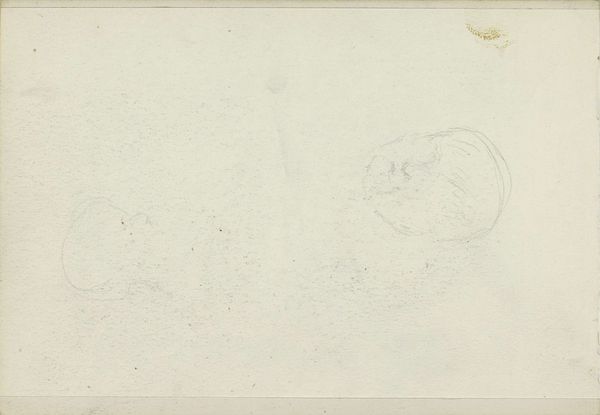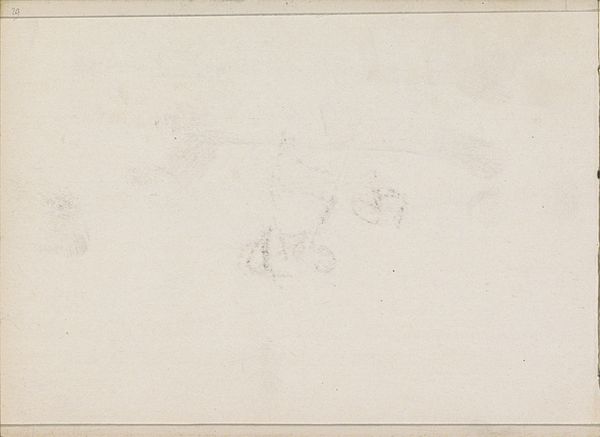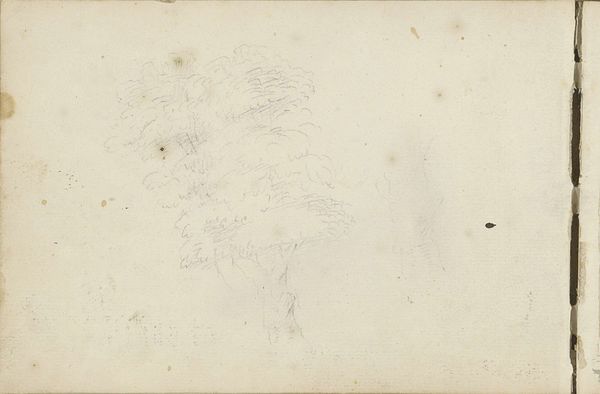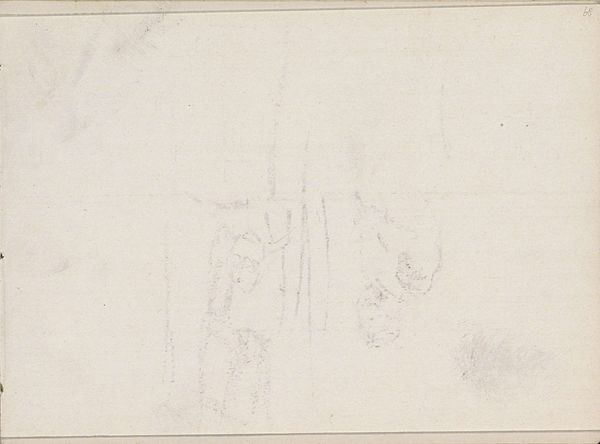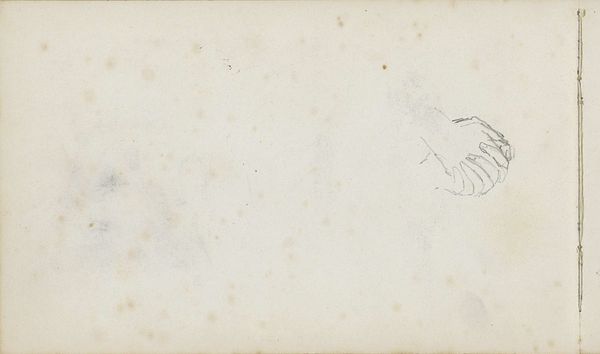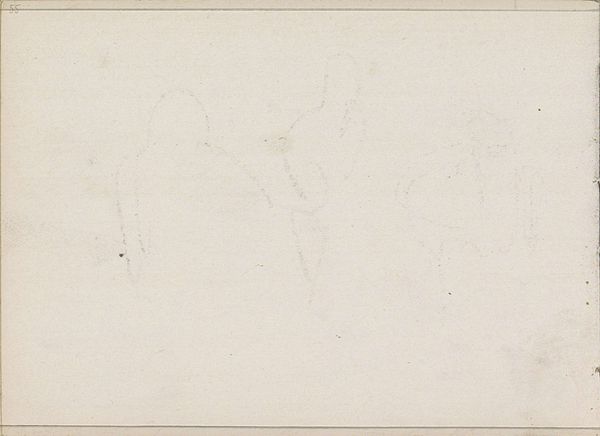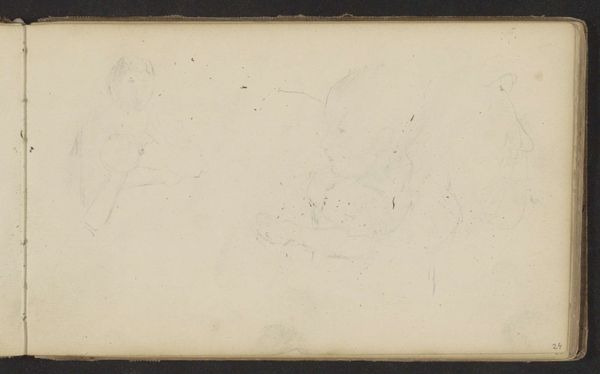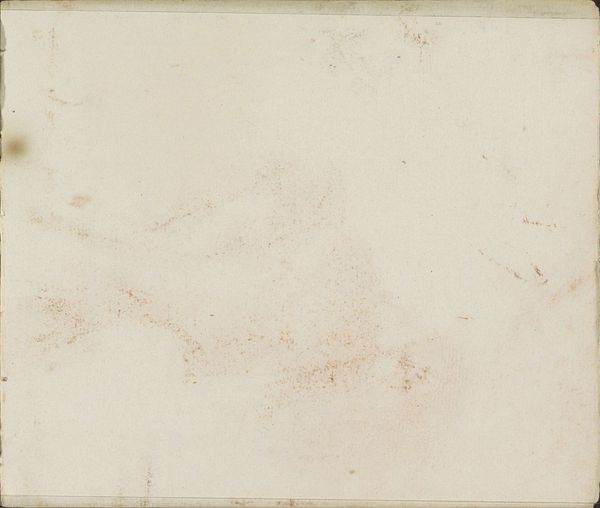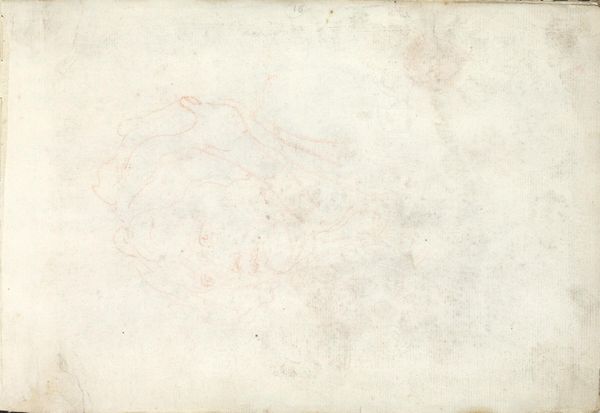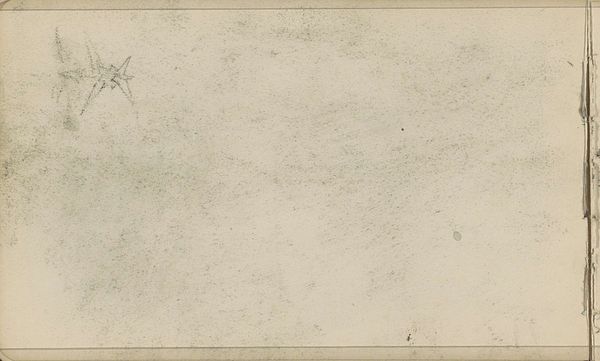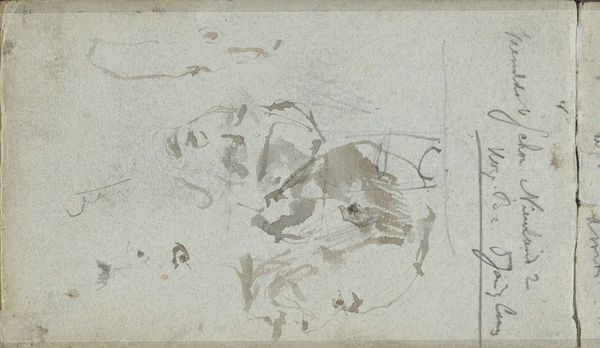
drawing, paper, pencil
#
drawing
#
amateur sketch
#
toned paper
#
light pencil work
#
sketched
#
incomplete sketchy
#
landscape
#
figuration
#
paper
#
personal sketchbook
#
pencil
#
sketchbook drawing
#
quick sketch
#
sketchbook art
#
realism
#
initial sketch
Copyright: Rijks Museum: Open Domain
Curator: This is "Klompen," a pencil drawing on paper made around 1875 by George Clausen. Editor: My first impression is of fragility, it’s a preliminary sketch—light, incomplete. It looks like the artist was quickly trying to capture a form. Curator: Clausen was known for his realism and depictions of rural life. The sketch gives us a glimpse into his process of observing everyday objects and imbuing them with significance. The Klompen, or wooden shoes, were a common sight. What is not clear in this simple study is how social status affects those who wore this style of functional shoe at this period in history. Editor: Indeed, the very nature of the materials involved speaks volumes. The quick marks suggest efficiency. Pencil, readily available; paper, a common ground. How does this accessibility shape who has the power to represent which members of society and under which working conditions? I am left pondering on labour conditions required for pencil, and for the wooden shoes depicted in this amateur work. Curator: It does also bring questions around identity, as rural laborers could have been overlooked during this historical time, particularly with class difference between art consumer and sitter or model for paintings. It suggests a kind of raw simplicity, avoiding any grandeur or embellishment and thereby communicating about a certain portion of the society, usually overlooked in more mainstream artistic productions. Editor: Thinking about it, the medium itself contributes to the accessibility that both enables and limits representation. The texture of the toned paper, the quick pencil lines—they communicate the conditions of both creating and of living. This isn’t simply a drawing of a simple object. It tells a larger story of labour. Curator: I concur entirely. It brings into focus not only artistic making and labor, but a much wider frame where class, gender, race are intertwined during an specific moment. This piece, although at first sight rudimentary, brings complex social relationships forward for us to interpret. Editor: Exactly. It shows that even an early, unpolished sketch can have powerful insights. Curator: Definitely. Every piece has value as long as it is recontextualized with contemporary awareness.
Comments
No comments
Be the first to comment and join the conversation on the ultimate creative platform.
